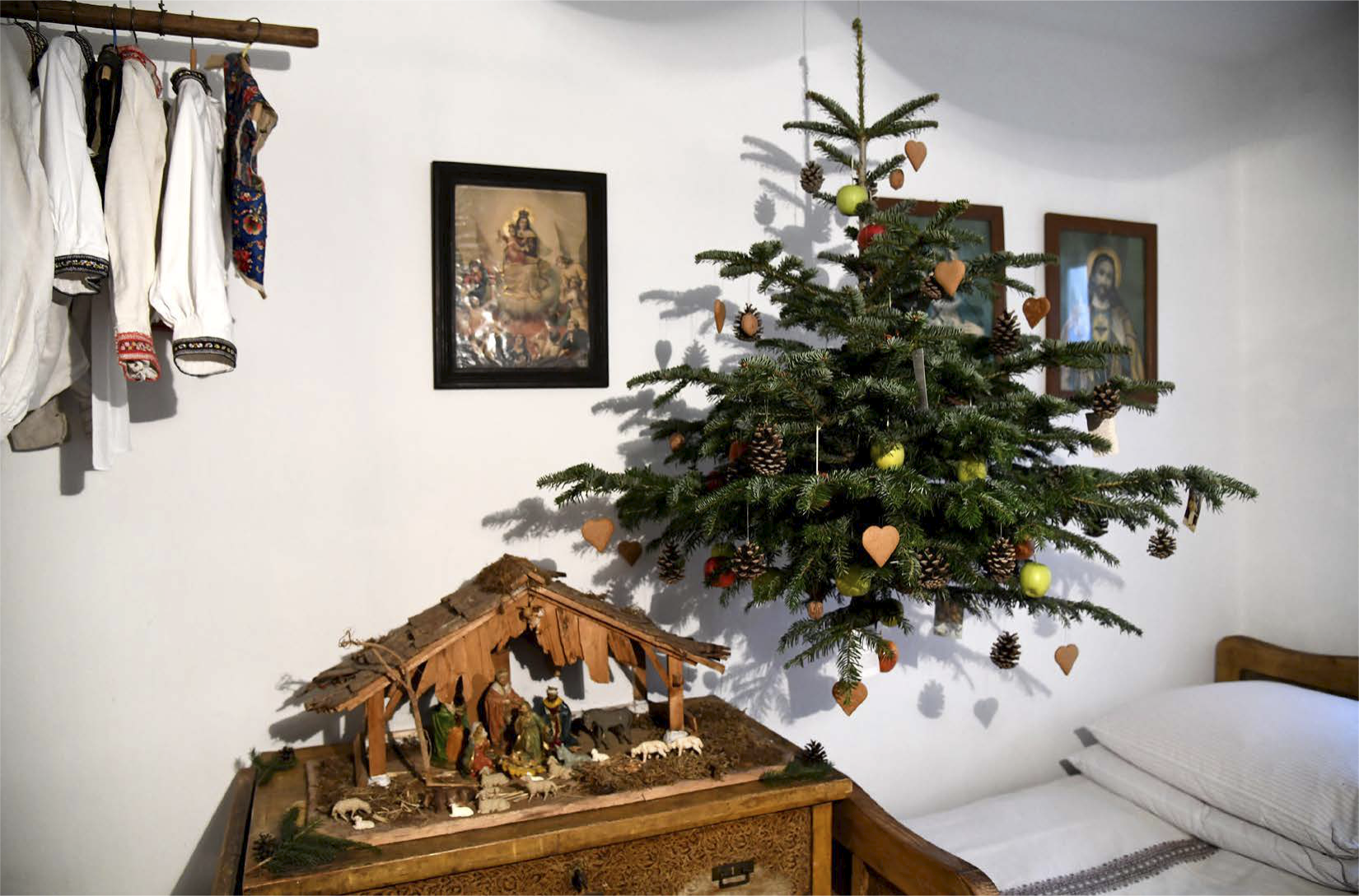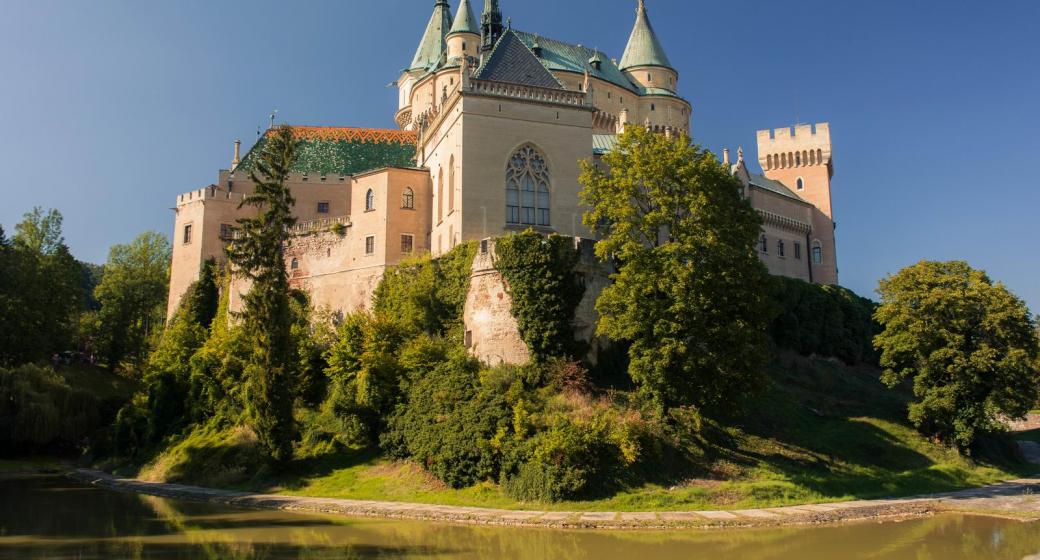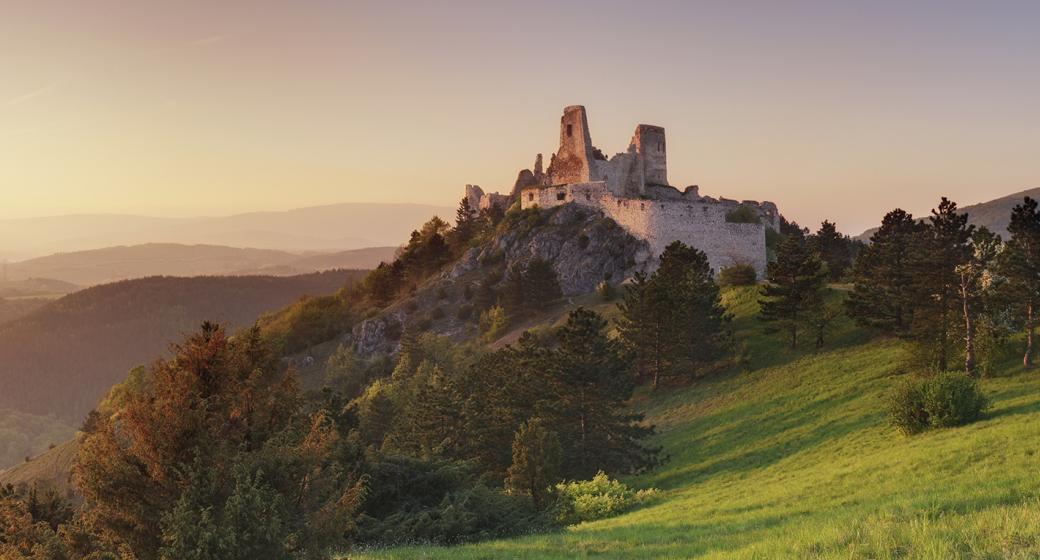


Christmas Eve, Christmas tree and gifts. When fresh snow is falling behind the windows, we have a picture of an ideal Christmas. However, Christmas is not just December 24th. It is already Advent time and preparation for this magical day or more precisely in the evening.
From the point of view of customs in our region, we went through the Christmas period with Zuzana Novodvorská, a guide with the Cultural Information Center in Trenčín. Last year, she accompanied visitors to the city during the Christmas markets and explained to them what and why our ancestors did.
Christmas can be seen from different perspectives. From Christian as a holiday that is associated with the birth of Christ. We also see them as a set of habits that should ensure health, happiness, harvest and prosperity in the coming year. "It was this period that fell on the winter solstice, the new year. And with that comes the magic of the beginning. People needed to ensure the mentioned abundance in the coming year in magical but also rational ways, “Zuzana Novodvorská introduces us to the Christmas atmosphere. According to her, some customs are rational, but many are rather superstitious. But thanks to patrols with various masks, vins, verses and Christian games, Christmas creates a beautiful complex of customs as we know them now. At the same time, they are perceived as holidays of peace, tranquility and family.
Advent and old days
Christmas itself begins on December 24, but is preceded by Advent. "The name comes from the Latin word adventus, which means arrival. It is the preparatory period for the birth of Christ. It lasts four weeks and symbolizes the mythological four thousand years that were to go from the creation of the world to the birth of Christ. This period is also the beginning of the liturgical year. The decoration of the church and the color of the chasuble are then purple and the symbol of this period is the Advent wreath. The ancient Germans and people in Scandinavia built candles in the shape of a circle. In the time of short days and long nights, they hoped that the beautiful summer days would return. In Christian perception, these four candles symbolize four Advent Sundays, and every Sunday we light one extra candle, "says Novodvorská, adding that the round shape of the wreath is a symbol of the infinity of God and the immortality of the soul. The candle, in turn, is a sign of Christ as the light that came to Earth. During Advent, rorats are also held, which are morning masses before dawn. They are derived from Rorate coeli desuper, translated by Rosa give, heavens.
This period is also typical of previous days. It was a day when it was believed that evil forces, witches, witches had a very adverse effect on a person. People tried to defend themselves against these forces. Stridžni days started with Katarína, continued with Ondrej, Barbora, Mikuláš, Lucia and the last one was for Tomáš (it was December 21st, today Tomáš already has a name day in March). During the old days, people performed several magical practices. They used herbs, created circles, crosses, put on masks and made noise. "Strizji days gave a stop to women's work and women's visits were also forbidden. He had to eat garlic and, for example, to house a house or cattle. Everything to ward off evil forces. ”On St. The last parties before Christmas took place at Katarína. The day after Catherine began with spinning, as even this woman's work could not be done during the striae day. Catherine's pastimes have survived to the present day. If the girl wanted to get married, she put a vase with a twig from a fruit tree in the arch. Every day she poured water over her mouth. If the twig bloomed by Christmas, it meant that it would go next year.
For example, at St. Ondrej (as the patron saint of single girls), in turn, was loving magic.

Christmas Eve
Christmas Day was also called Kračúň or Dohviezdny den. The whole thing was connected with the preparation for the Christmas Eve and also the Christmas itself, ie on December 25th. Since it was a new era, a birth of a new life, the magic of the beginning played an important role here as well. "It was true that what this day will be like, the next period or another year will be. Therefore, it was necessary to ensure that everything was abundant. In order for people to be happy, they had enough of everything and a good harvest. Even before sunrise, the men had to prepare new tools for preparing food, for example, to grate the stalks. They also had to circumcise the cattle and the women had to mix the dough for cakes and bread. By lunch they had to bake and prepare the individual courses.
It's not Christmas without cakes
Cakes were a very important part of the holiday menu. Again, symbolism plays a role here, there is an abundance hidden in the cakes. This was multiplied by other symbols of abundance - poppy or walnut filling. The ceremonial cake - the crocus - also fulfilled a symbolic function. It had a round shape (cycle of life and eternity) and was knitted (family cohesion), in the middle there was a hole or a hole filled with honey. The dough for the bush was made only from spring water with flour, salt and yeast. And, of course, there were also protective herbs such as parsley, garlic, sacred herbs, sometimes horseradish or hazelnuts.
"Hands from the road, the housewives went to rub the bark of fruit trees. The yeast, ie the fertile power, was also transferred to the trees themselves, so that they would give birth well in the following year, "Zuzana Novodvorská opens another room of habits.
Since cattle were an important part of households, they also did well. Special garlic pies were served for gunar, duck and dog. And the reason? To reinforce aggression and be able to protect their territory.
There were also small cakes on the plate for carolers and beggars who could knock on the door.
Sacred table
Great preparation was also devoted to the table. In every house the table was a sacred place, as bread was laid on it. In some regions, it was also covered with carbon at Christmas, and in the east of the country it was also covered with a tarpaulin from which grain was sown. With us, only a tablecloth was put on the table, which was not done during normal days. Grain or ears were placed on the table, under the table or under the tablecloth, and there were also legumes on the table. Again a symbol of abundance. "There was also poppy, money and later also fish scales. Under the table you could find iron tools, such as a spade, the legs of the home table wrapped around an iron chain. He placed a mutant to mash the butter next to the table, and all the food served during Christmas Eve had to be right on the table. There was also bread, cakes and a candle. The table prepared in this way was to remain until December 27, the feast day of John the Evangelist, "describes Novodvorská.
Everything from the table, including crumbs, was considered sacred. For example, honey was later used for healing, salt was intended for bees, spice for three domestic animals - gunar, duck and dog.

Christmas Eve
Christmas Eve began with the rising of the first star, which was announced, for example, by trumpeting. Prayer followed, the vine of the household and the toast. In our region, it was drunk with honey or sugar brandy. The housewife made a cross on everyone's foreheads with honey, especially children, to keep them healthy. Then they cut an apple, each member of the family received one piece. This too was supposed to symbolize the cohesion of the family. However, everyone at the table also got their own apple, which they cut, and according to the model, it was determined whether they would be happy next year.
At least a seven-course dinner
Again, it was about abundance and especially its provision for the next year. There were seven to nine courses on the Christmas Eve table. "It seems like a lot, but two or three bites were eaten from each course. So that everyone can taste each of them. The menu and its order have been arranged to provide the magic of the beginning and all the effects. First in line were wafers that were once baked by a teacher or rector-organist. The wafers were eaten with honey and garlic, somewhere they also added horseradish or nuts, "explains KIC guide Zuzana Novodvorská. The rest of the evening depended on whether it was a Catholic or an Evangelical family. The Evangelicals also enjoyed meat on Christmas Eve, and Catholics fasted until midnight and ate meatless meals. They only cooked cabbage with mushrooms and prunes. Evangelicals also added sausage and smoked meat to it. "In Trenčín and its surroundings, legume soups were also served - pea, lentil or pea with vegetables. Mushroom sauce followed, then the cabbage mentioned. The next course was fish, in our region, for example, stream fish flooded with eggs. In Záblatí (part of Trenčín) they also had haring porridge, which was fish mixed with croissants or pieces of toasted sourdough, flavored with spices and parsley and topped with egg and milk, so it could be baked on a plate. We can say that it was an Easter bun, in which the ham was replaced by fish meat. ”In other courses, there were cakes, strudels, so-called babies or small fish with walnut or poppy seed filling. They are still popular today, and with them the Christmas tree, which has four layers of filling. There are also nuts, poppy seeds, jam and cottage cheese. "Christmas was not missing on the Christmas Eve table - and even now it is a part of it. Once again, it is an intertwined cake from several sources, which symbolized cohesion. ”During Christmas Eve, fruit was also eaten - apples, pears or plums, even dried ones. "Prunes from Trenčín were a fancy delicacy, which they imported on rafts to Bratislava, Budín and Vienna, where there was great interest in it. The delicacy was those in which they put a nut or almond instead of a stone. Dried pears soaked in honey were also a delicacy, and Selce had prunes with poppy seeds. Boiled fruit was also served on Christmas Eve, which was dried fruit boiled in a little water with spices. There was no shortage of schnapps and the children were served a decoction of dried fruit, "concludes Zuzana Novodvorská.
Gifts from carolers
Writing to Jesus and expensive purchases have not taken place in the past. Darčekombol vinš. Carolers went to households, causing happiness, health and abundance until next year. "The magic of the word is based on that. That I believe that if I say something, I wish in a good way, it will come true. For example, the greeting good day also symbolizes that we wish someone to have a really good day. So as a gift, it was really enough to wrap, or there were games and dances of carolers. They got cakes, money or in kind for them. In order to preserve the magic of the beginning again, a carol had to come early in the morning - a handsome young man, washed and nicely dressed, preferably if he came up from the end of the village. As he went uphill, the property of the village and the family itself was to be further developed. "
Gifts, as we know them today, and the Christmas tree are relatively new customs. "At first there was no tree in the household, then it was hanging and only later people built it. It was at the turn of the 19th and 20th centuries. And when a standing tree appeared in the household, gifts began to be stored. At first it was a trifle. Now Christmas has changed significantly. It's more about gifts and spectacular decorations. "
On Stefan
The second holiday of Christmas was a time when people met in large numbers. Since parties were banned during the whole of Advent, they could not wait for the first party for Štefan in the afternoon. Stefan's entertainment is still popular. "During this day, it was customary in Kubrej near Trenčín to walk on so-called acid water. It was believed that the water would turn into wine, so the young men and the girls accompanied the accordion through the village and distributed this water. Then they went to the mentioned party and the families visited each other. ”The reason was also the fact that Štefan was once a very common name, so the namesakes went to blame each other. It was also called polishing or stifling. "This means that the celebrant in question was tied up and redeemed himself with some gifts (brandy or an allowance for evening entertainment). Stefan's parties could take place somewhere after midnight, and in Kubra, for example, if the girl left the house earlier, she had to buy a wax candle for the church, which was a very expensive item at the time. The bachelors even had a penalty of buying up to five kilograms of candles, "concludes Zuzana Novodvorská's Christmas story.
In Soblahov, one of Štefan's customs is maintained to this day. As the only village in Slovakia, it organizes the Štefanská cavalry. The Furmans take the horses out of the stables and go for a walk through the village with them "so that they don't stop".


HISTÓRIA. Prvá písomná zmienka o existencii hradu je z roku 1113 v listine zoborského…

Malebná zrúcanina viditeľná už z diaľky na vápencovo-dolomitickom kopci poskytujúca…